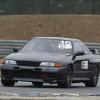Father Of The Skyline Passes Away
Announcements
-
Similar Content
-
Latest Posts
-
Damn, as someone who just glued the damn things in (very slightly askew but better) I wish I saw this, or someone made this. Would be worth linking this to Boosted International. They're always looking for product ideas and this is something they would likely make.
-
You know what, I'll double or nothing. Save your money, buy a V8 Manual Mustang in 2 years and have a more fun street car with better support and all that. I often tell people "if I could do it all again, I wouldn't". Sell your R34 GTT to someone, spend the 20k in difference between that and a 2018 Gen2 V8 Manual Mustang. I'll bet you will have the $ in your pocket by the time you spend the ~20K differential on mods and get them installed. Just planting this seed for future regrets. Blah blah, wisdom of people who would do it differently who are at the end of the road you are just starting on, etc. Car modding is often death by a thousand cuts as you wait to afford the next big mod. Imagine a 2 door Skyline with a 330KW N/A V8 Revving to 7500rpm like the RB25, with 315's all round.
-
Yes I'm going through a similar thing with my R33 with rust in seams due to dried out seam sealer cracking. After much research I settled on Penetrol. Read what it does and its done a bloody fantastic job for me. Pressure pack comes with a thin tube to get into hard to reach places.
-
By Dose Pipe Sutututu · Posted
If someone walked up to me and offered me an amount that I can't refuse, please take it away, I'll throw in half my tools, the boxes of brand new OEM spares, anything in the house I can find that's Skyline related. Want the lot gone. (don't mod your car, you'll regret it)
-







Recommended Posts
Create an account or sign in to comment
You need to be a member in order to leave a comment
Create an account
Sign up for a new account in our community. It's easy!
Register a new accountSign in
Already have an account? Sign in here.
Sign In Now